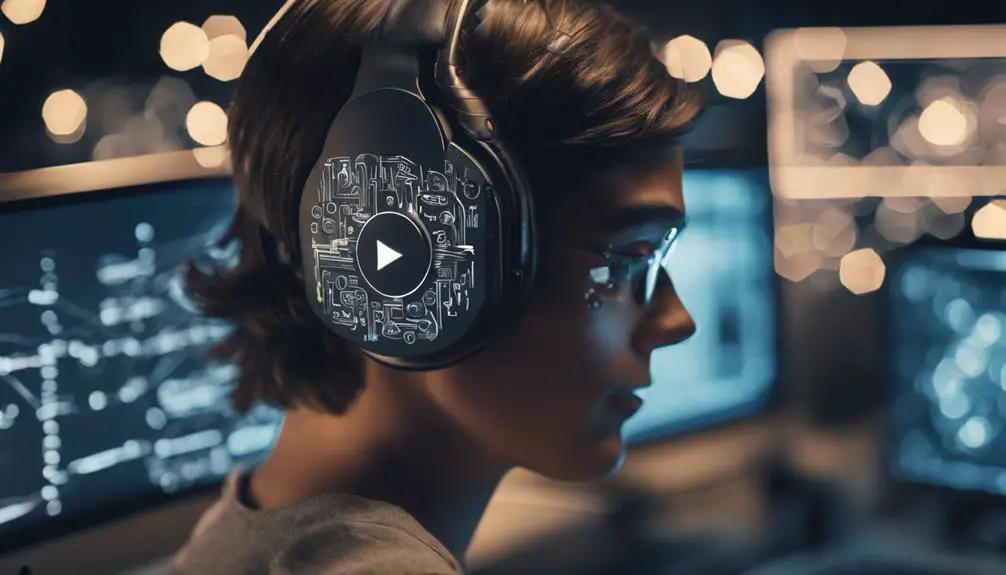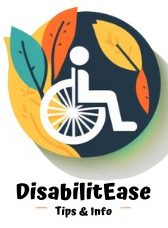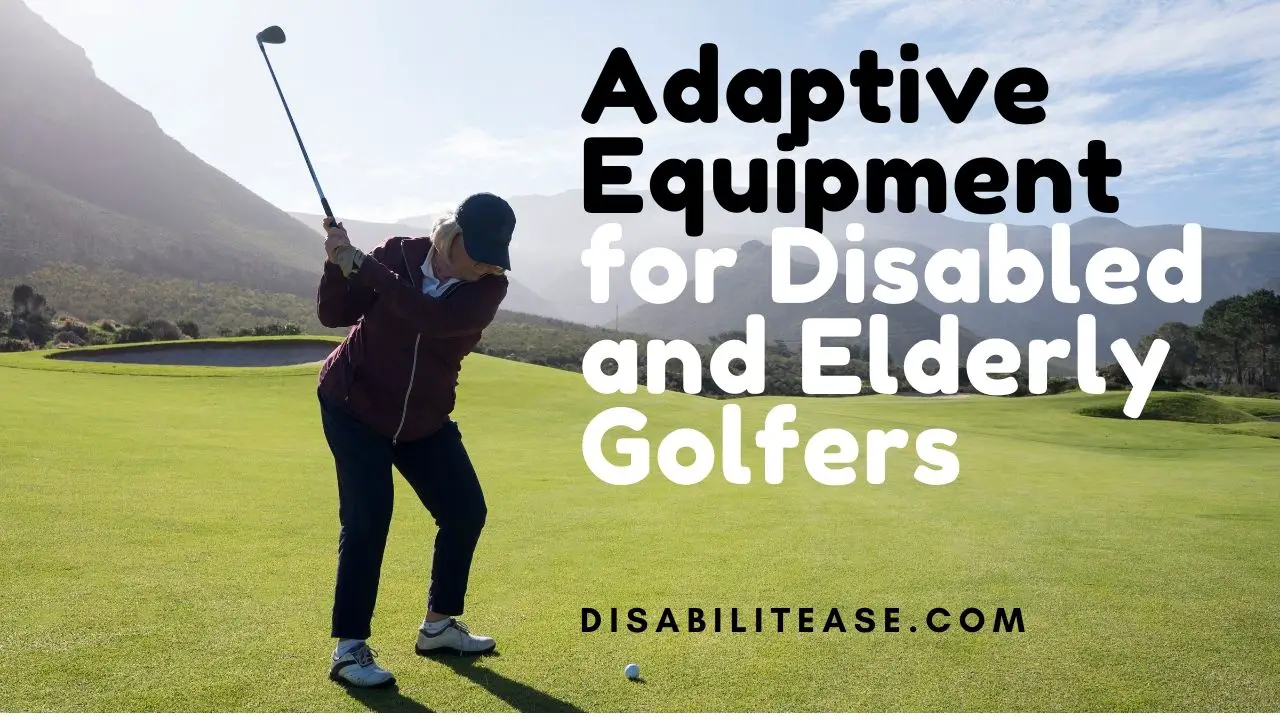In 2024, you’re in for a treat if you’re looking for screen readers to navigate the digital world with ease. JAWS is still leading the pack, offering tons of customization for browsing and reading documents.
Then there’s Microsoft Narrator, which really steps up the game for Windows users, making everything more accessible.
For those of you hooked on Chrome, ChromeVox is your go-to for web surfing.
Apple enthusiasts? VoiceOver has got your back with its super user-friendly interface.
And let’s not overlook NVDA – it’s the go-to for anyone looking for a free and open-source option without sacrificing quality.
As you dive deeper, you’ll find out just how these tools can change the game for your online experience, making it smoother and way more fun.
Table of Contents
Understanding Screen Readers
Screen readers are pretty amazing when you think about it. They turn digital text into audio or braille, so people who are blind or have visual impairments can get onto their computers or smartphones just like anyone else. It’s a game-changer, really. It means that everyone gets a fair shot at accessing information and staying connected. Getting to know how screen readers work is a big step toward understanding the cool tech that makes the internet and all sorts of digital content available to everyone, no matter how they see.
But these tools aren’t just about reading out loud. They do so much more. They let users move around complicated menus and interfaces without a hitch. So, whether it’s surfing the web, going through documents, or keeping up with emails, screen readers are there to make sure visually impaired folks can do their thing without needing help.
The real magic of screen readers is how they take stuff meant to be seen and turn it into something to be heard or felt. That’s crucial because it’s not just about getting by; it’s about diving in and really being part of the digital world. Understanding what screen readers do is a big deal. It shines a light on the importance of creating tech that includes everyone, making sure people with visual impairments can navigate the digital world with confidence.
Top 5 Screen Readers Overview
Diving into the top five screen readers really opens up the exciting world of digital accessibility. It’s all about helping people who are visually impaired or blind to navigate the digital space. Imagine the internet, apps, and all sorts of documents coming to life through speech or braille. That’s what these amazing tools do—they make everything more accessible and inclusive.
So, who are the big players in this field? We’ve got JAWS, NVDA, VoiceOver, Orca, and ChromeVox leading the pack. Each one has its own special features that meet different needs and preferences. These aren’t just pieces of software; they’re like lifelines. They boost independence, productivity, and make sure everyone gets to be part of the digital world, no matter their visual capabilities.
And the best part? These screen readers keep getting better. There’s a lot of focus on making them work smoothly with all kinds of platforms and devices, improving how users experience them, and just generally making the internet a place where everyone can hang out. As technology moves forward, so does the effort to ensure the digital realm is welcoming and accessible to everyone, vision issues or not.
JAWS: Features and Benefits

JAWS is hands down the go-to screen reader for folks using Windows, especially if you’re navigating the digital world without full vision. It’s like it’s been custom-built just for you, with all these customizable bells and whistles that make surfing the web, reading documents, or just staying connected a breeze.
Now, keep in mind, JAWS is a bit of a memory hog, but that’s because it’s packed with features. Think about it – from browsing the internet to reading your emails, this tool has got you covered. And the best part? You can tweak it till it feels just right, making your online journey smooth and personalized.
For anyone who’s blind or dealing with vision loss, JAWS isn’t just another software. It’s your key to unlocking the digital world, tailored for the Windows environment. It’s all about giving you the independence to explore, learn, and connect, breaking down those digital walls and opening up endless possibilities.
Microsoft Narrator: Enhanced Accessibility
Microsoft Narrator is like the buddy that’s always there for you right when you boot up Windows. It’s super handy because you don’t have to download anything extra to get some help navigating your computer. But, let’s be real, it’s got its limits, especially when you’re trying to dive deep into your system settings or tackle some complex interfaces.
Now, even though it’s part of the whole Windows package, there are times when using Narrator feels a bit like trying to have a deep conversation in a noisy room. You know, when you’re trying to adjust settings or explore the system more thoroughly, and suddenly, Narrator goes quiet on you. It’s like it’s saying, ‘Oops, I can’t help you there,’ leaving you hanging without those visual cues that could guide you through.
ChromeVox: Navigating the Web

Diving into the digital world with Chrome? Well, ChromeVox is like your friendly guide, making browsing a breeze. It’s specially made for the Chrome platform, so for folks who rely on the Chrome browser and need a bit of help seeing things clearly, ChromeVox is a game-changer. It’s not just any tool; it’s packed with features and comes with Chrome laptops. Plus, adding it to your Chrome browser is super easy, meaning accessibility is just around the corner.
Now, let’s talk about how ChromeVox sounds. The voice options are pretty nice, making surfing the web not only easy but also kind of fun. Sure, it might’ve a hiccup here and there, but users love how user-friendly it is. It’s like it knows you’re new to this and gently guides you through, making everything less intimidating.
The real magic happens with the customization and accessibility features. ChromeVox lets you fine-tune your web experience to fit exactly what you need and like. Whether it’s reading up on the latest news, managing emails, or discovering cool new sites, ChromeVox has got your back. It’s more than a screen reader; it’s your ticket to experiencing the digital world in your own way, even if you can’t see it with your eyes.
VoiceOver: Apple’s Solution
Okay, let’s dive into what Apple has up its sleeve for folks who need a bit of help seeing their screens. Enter VoiceOver – it’s this cool screen reader that comes with Apple devices. No fuss, no muss with installing extra stuff. It’s all about making life easier for visually impaired users. And guess what? It’s pretty darn user-friendly, with lots of settings you can tweak to make it work just right for you.
Now, here’s the kicker: VoiceOver isn’t just sticking you with one voice or language. Apple’s thrown in more than 30 language options! So, no matter where you’re from or what language you speak, you’re covered. Surfing the web, checking out documents, or chatting away on your device, VoiceOver’s got your back, making everything more accessible.
For anyone needing that steady and reliable help, VoiceOver’s like a friend who’s always there. It’s part of the whole iOS family, showing just how much Apple cares about making things easier and more inclusive for everyone.
NVDA: Free and Open Source

NVDA has really changed the game when it comes to screen reading tech. It’s a game-changer for folks with visual impairments, offering a free and open-source way to easily navigate computers. Created by a blind software engineering grad named James Teh, it’s at the top of its class in making computers accessible for those who can’t see. By using synthetic voice output, NVDA turns the digital world into something you can hear, letting you interact with your Windows system like never before.
Now, imagine being able to carry your access to the digital world right in your pocket. That’s the beauty of NVDA’s portability. You can run it straight from a USB stick, which is super convenient for students and professionals who are always on the move. This screen reader carefully goes over the text under the cursor, making sure you get the correct info about screen elements for a smooth interaction.
For someone with a visual impairment, finding tech solutions that don’t break the bank can be tough. That’s where NVDA shines. It’s a beacon of hope, offering advanced features without the big price tag. It’s more than just a tool; it’s your ticket to an accessible digital world. It shows that open source really can provide top-notch computer accessibility with synthetic voice output, all tailored for the visually impaired.
Choosing Your Ideal Screen Reader
When you’re on the hunt for the perfect screen reader, the key thing is making sure it plays nice with your devices and software. This step is super important because, whether your vision is impaired or you’re completely blind, having the right screen reader is like having a superpower for navigating the digital world.
Now, let’s talk about how well the screen reader gets along with your operating system. Each one has its own special sauce, you know? And some are made just for Windows, others for macOS, or even Linux. You definitely don’t want to be stuck with something that’s more of a headache than help, getting in the way of what you need to do.
And here’s another thing – it’s gotta be easy to use. Imagine having a screen reader that feels like second nature when you use its keyboard commands or braille displays. It’s all about making things simpler so you can dive into your work or kick back with your hobbies without wanting to pull your hair out.
So, here’s a little cheat sheet on what to look for:
| Feature | Why It Matters |
|---|---|
| Plays Well with Your OS | Super Important |
| Easy-to-Use Commands or Braille Inputs | Really Important |
| Cool Extras (like reading colors or highlighted text) | Nice to Have |
Picking the right screen reader? It’s all about finding that sweet spot between what it can do and how easily it lets you do your thing.
Frequently Asked Questions
What Is the Best Screen Reader for Blind People?
It kinda hinges on what you’re looking for and what device you’re using. If you’re all about tweaking things to your liking, JAWS is a solid pick. Now, if you’re in the Apple ecosystem, VoiceOver is your go-to. And for those on Windows, NVDA has got your back with some reliable support.
What Is the Latest Technology for Visually Impaired People?
If you’re dealing with visual impairment, guess what? There’s some really cool tech out there for you now. We’re talking about the latest screen readers that are absolutely cutting-edge. They come with speech and braille output, plus you can tweak the settings to make it just right for you. And the best part? They’ve got way better support for all sorts of apps, making surfing the digital world a breeze and way more intuitive than before.
Which Is the Commonly Used Software by a Visually Impaired Person?
Well, let me tell you, it’s JAWS. This software is super popular because it works well with lots of different programs and can be tweaked a bunch to fit someone’s needs perfectly. It’s really the go-to for making digital stuff easy to get to.
Conclusion
Navigating the digital landscape in 2024 with a visual impairment is now smoother than ever with these top 5 screen readers.
If you’ve got a thing for JAWS, its rich features are sure to catch your eye.
Or maybe Microsoft Narrator, with its top-notch accessibility, is more your style?
For those who love surfing the web, ChromeVox could be your go-to.
And let’s not forget about VoiceOver, Apple’s own integrated solution that’s pretty slick, or NVDA if you’re all about keeping it free and open-source.
It’s really about finding the screen reader that clicks with your vibe, turning your online journey into a breeze.
So go ahead, tweak it, make it yours, and dive into that digital freedom waiting at your fingertips.

Hi, my name is Eddie, I am a professional trainer specializing in the elderly population and I’m also a website designer. I love training in the gym, going to the beach, traveling, and having good food.
I combined my love for sport and website designing to make “DisabilitEase” whose purpose is to help elderly and disabled people live a more full and active life, have more fun, and enjoy their unique journey despite any disability.



